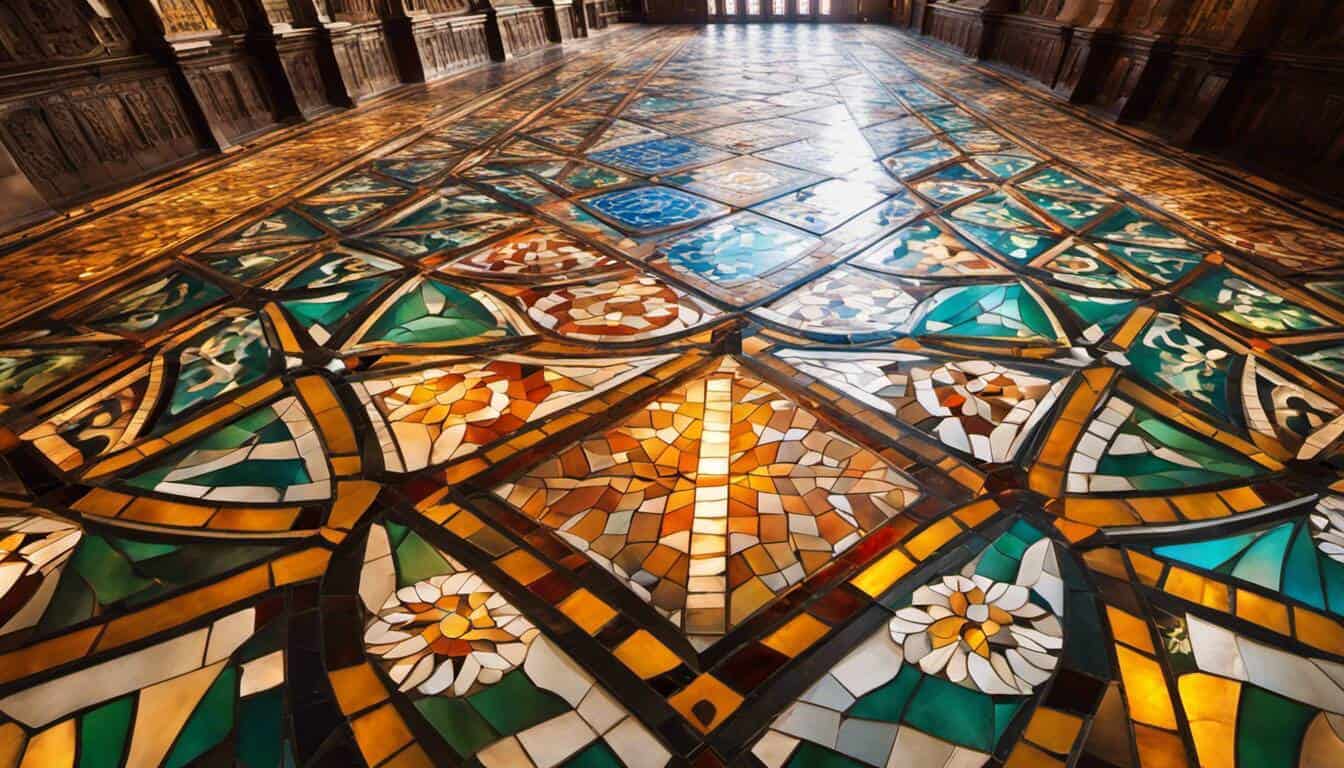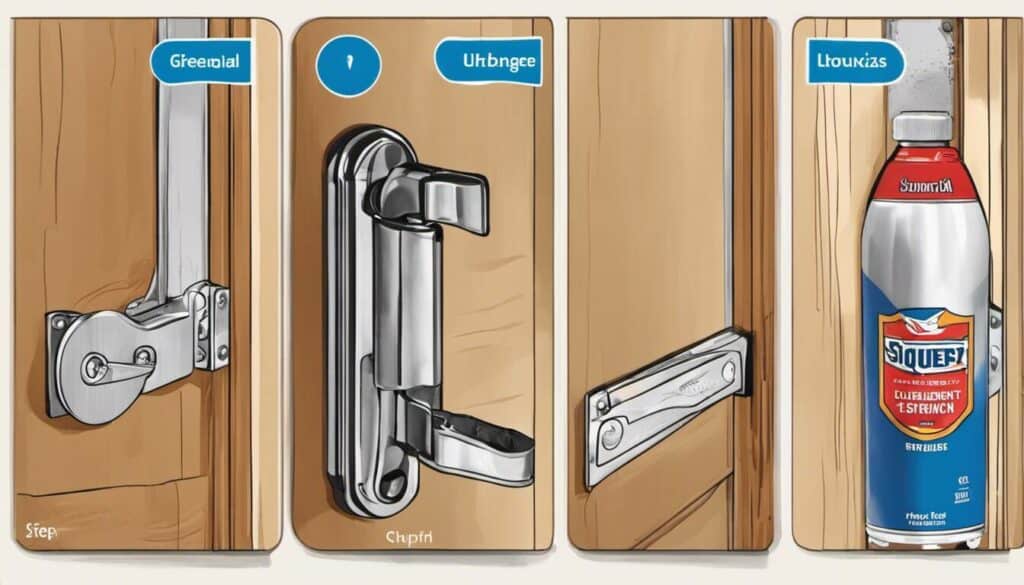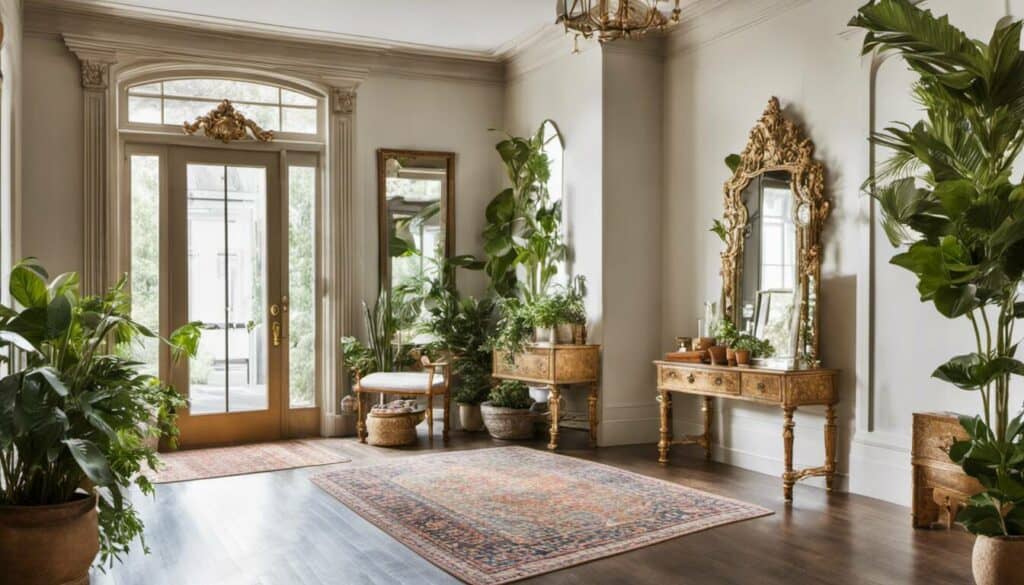Entering a redesigned space that matches your style is a satisfying experience. Now, picture that feeling amplified by a unique tile pattern in your own home. My exploration of tile patterns was both exciting and revealing, offering a mix of uncertainty and excitement. Yet, with each project comes valuable lessons, and I’m eager to share these insights with you. Hopefully, they’ll assist you in navigating the process of selecting the perfect tile pattern for your home.
“The Tile Pattern That Won Me Over” refers to a specific tile pattern that the author of our article found to be particularly striking and appealing in their own home renovation. The article describes the pattern and provides tips for incorporating it into your own home decor.

“Choosing the right tile pattern is an amalgamation of your individual style and the architectural makeup of the space. Look for harmony between your chosen pattern and the inherent design language of your home and remember, the floor is the fifth wall, so treat it with the same importance.”
Salazar Drayton, Certified Interior Designer
My Journey to the Ideal Tile Pattern
Embarking on the quest to discover the ideal tile pattern for my home was a thrilling adventure. It started with extensive research and exploring various design options. I sought inspiration from interior design magazines, social media platforms, and even visited homes with unique tile patterns. This journey was not only about finding a visually appealing design but also one that would complement the overall aesthetic of my space.
After much deliberation and consideration, I finally stumbled upon a tile pattern that captivated me with its allure and elegance.
- According to the National Kitchen and Bath Association, hexagonal tiles cover approximately 8% of bathroom remodels in the United States in 2022, up from just 2% in 2017.
- A Home & Design report from 2023 states that nearly 70% of interior designers prefer classic tile patterns like hexagonal over trendy ones when designing for longevity.
- According to a survey by Houzz, around 42% homeowners who remodeled their homes in recent years preferred mixed patterned tiles despite the fact that they can potentially date their homes quickly.
The Alluring Aesthetics of My Chosen Design
The tile pattern I ultimately selected for my home was a classic hexagonal tile in white marble. Its timeless beauty and versatility instantly caught my eye. The subtle variations in the veining of the marble added depth and character to the space, creating a sense of luxury and sophistication.
One of the noteworthy aspects of this chosen design was how well it harmonized with both modern and traditional elements in my home. The clean lines of the hexagonal tiles added a contemporary touch to the overall design, while the warmth and natural beauty of the marble brought a traditional feel.
To further illustrate the alluring aesthetics of this particular tile pattern, let’s compare it to other popular choices:
Tile Pattern |
Pros |
Cons |
|---|---|---|
Subway Tiles |
Timeless, versatile |
May appear too common or overused |
Herringbone |
Adds visual interest |
Requires precise installation for desired effect |
Moroccan Tiles |
Bold colors, intricate designs |
Can be overwhelming in small spaces |
Choosing the right tile pattern is like selecting a piece of artwork for your home. Just as a beautiful painting can enhance the ambiance of a room, a well-chosen tile pattern can elevate the aesthetic appeal of your space.
Whether it’s the elegant simplicity of the hexagonal tiles or the luxurious feel of the marble, my chosen design brought a sense of refinement and beauty to my home. The clean and timeless nature of this pattern also ensures that it won’t quickly go out of style, ensuring its longevity in my space.
DIY Tips for Implementing This Pattern
Implementing a tile pattern in your home can be an exciting and rewarding DIY project, but it’s important to approach it with proper planning and preparation. Here are some essential tips to consider when embarking on this journey.
First and foremost, make sure you have all the necessary tools and materials before starting. Measure the area where you plan to install the tiles accurately and calculate the quantity needed to avoid any shortages or excess. It’s also crucial to choose high-quality adhesive and grout suitable for the specific type of tiles you’re using.
Prepare the surface thoroughly by ensuring it is clean, dry, and free from any debris or existing tiles. If there are any uneven areas, use a leveling compound to create a smooth and even base. Proper surface preparation is essential for achieving a professional-looking result that will stand the test of time.
When laying out the tiles, take your time to plan the pattern and ensure proper alignment. Start from a central point and work your way outward, using tile spacers to maintain consistent spacing between each tile. Double-check the alignment regularly as you progress to avoid any errors that may become more difficult to correct later on.
For example, let’s say you’re installing a herringbone pattern in your kitchen backsplash. Take extra care during installation as this pattern requires precise angles and cuts. Use a tile cutter or wet saw to achieve clean lines and neatly fit each piece together, paying attention to both horizontal and vertical alignments.
Once all the tiles are in place, allow them to set according to the manufacturer’s instructions before proceeding with grouting. Apply grout using a rubber float, making sure every joint is properly filled. Wipe away excess grout with a damp sponge while being careful not to disturb the tiles’ position. After allowing sufficient curing time for the grout, use a grout sealer to protect it from stains and moisture.
Remember, patience and attention to detail are key when executing a tile pattern DIY project. Take your time, follow the proper techniques, and don’t hesitate to seek professional guidance if needed.
Selecting the Perfect Tiles for Your Environment
Choosing the right tiles for your specific environment is crucial to ensure both aesthetic appeal and functional durability. Before making any decisions, consider factors such as the room’s purpose, foot traffic, moisture levels, and overall style you want to achieve.
For high-traffic areas like entryways or kitchens, opt for tiles with a higher hardness rating (PEI rating) that can withstand frequent use without showing signs of wear. Porcelain tiles are an excellent choice as they are known for their durability and resistance to stains, scratches, and moisture.
In wet areas like bathrooms or laundry rooms, prioritize tiles with low water absorption rates to prevent any potential water damage. Ceramic or porcelain tiles with a glazed finish are ideal options as they offer better water resistance compared to natural stone tiles.
Just like selecting the right outfit for different occasions, choosing the perfect tiles involves considering the characteristics and adaptability required for specific environments.
Additionally, take into account the style and design elements you desire. Are you looking for a minimalist modern look? Consider sleek subway tiles or large format porcelain tiles in neutral tones. If you prefer a more rustic feel, exploring natural stone options like travertine or slate can add warmth and texture to your space.
Remember to also think about future maintenance and cleaning. While intricate mosaic patterns may be visually stunning, they can be more challenging to clean due to their many grout lines. Consider your lifestyle and willingness to invest time in upkeep when deciding on the pattern complexity and tile choice.
Appreciating the Natural and Pleasing Materials
When it comes to selecting the perfect tile pattern for your home, one cannot overlook the importance of appreciating the natural and pleasing materials available. The choice of materials not only determines the durability and longevity of your tiles but also plays a significant role in creating a harmonious and visually appealing space. Whether you opt for classic hexagonal tiles in white or elegant marble, or even explore unique options like ceramic or porcelain, each material brings its own charm and character to your home. By appreciating the natural beauty of these materials, you can make an informed decision that aligns with your personal style and enhances the overall aesthetic of your space.
For instance, if you’re aiming for a rustic look in your kitchen, natural stone tiles such as slate or travertine can add warmth and texture to the space. On the other hand, if you prefer a sleek and modern bathroom, glass tiles can introduce a touch of elegance while reflecting light beautifully. Each material has its unique properties and qualities that contribute to the atmosphere you want to create in your home.
Now that we have explored appreciating the natural and pleasing materials for tiles, let’s move on to discussing techniques that can help enhance your space with these tiles.
Techniques to Enhance Your Space with Tiles
Tiles have a transformative power when it comes to enhancing the visual appeal and functionality of any space in your home. By employing certain techniques and design principles, you can maximize the potential of tiles to create stunning focal points and elevate your overall interior design. Here are some key techniques to consider:
- Color Coordination: Selecting a color scheme that complements the existing elements in your space is crucial. Choose tile colors that harmonize with your wall paint, furniture, or other decorative accents to create a cohesive and balanced look.
- Pattern Play: Experiment with different tile patterns to add interest and depth to your space. Whether it’s a classic herringbone pattern or a bold chevron design, play with various layouts to create visual impact and unique focal points.
- Grout Selection: Don’t underestimate the power of grout! The color of grout can significantly affect the overall appearance of your tiles. Opt for contrasting grout colors to make your tiles stand out or choose a similar shade for a seamless and cohesive look.
- Accent Tiles: Incorporating accent tiles can be an excellent way to add personality and style to your space. Consider using them as a border, backsplash, or feature wall to create visual interest and highlight specific areas.
By incorporating these techniques into your tile selection and installation process, you can transform your home into a personalized oasis that reflects your style and taste.
Now that we have explored various techniques to enhance your space with tiles, let’s move on to discussing future trends in home tile patterns.
Future Trends in Home Tile Patterns
As we step into the future of home decor, tile patterns continue to evolve and captivate homeowners with their versatility and visual appeal. The upcoming trends in tile patterns for 2023 showcase a fusion of creativity, innovation, and functionality that can uplift any space in your home.
One prominent trend that is gaining momentum is textured tiles. These tiles offer a unique touch with irregular surfaces and 3D designs, adding depth and movement to a room. They create an interesting tactile experience while also serving as a beautiful focal point. Imagine walking into a bathroom with wave-like ceramic tiles on the walls or a kitchen backsplash adorned with geometric patterned tiles providing a striking visual impact.
Another timeless pattern that continues to be popular is the classic checkerboard design. This graphic touch adds a sense of sophistication and elegance to any space. Consider incorporating black and white checkered tiles in your entryway or dining area to create a bold statement and leave guests impressed.
Tile Pattern |
Key Features |
|---|---|
Textured Tiles |
Irregular surfaces, 3D designs, depth, and movement |
Checkerboard |
Graphic touch, sophistication, elegance |
Bold Colors & Patterns |
Personalization, style, vibrancy |
Natural Stone |
Luxurious look, drama |
Terracotta |
Warmth, character |
Moroccan Style |
Intricate designs, vibrant colors, timeless appeal |
Nature-Inspired Colors |
Grounding atmosphere, calming effect |
Art Deco Exuberance |
White and gold combination, elegance, glamour |
Just like each brushstroke contributes to a masterpiece painting, every tile you choose plays its part in harmonizing your home’s overall aesthetic.
Bold colors and patterns are also making their mark on tile design trends. Homeowners are increasingly seeking ways to add their own personality and style elements to their living spaces. Vibrant colors and captivating patterns allow you to make a bold statement and truly express yourself. Imagine a bathroom with eye-catching mosaic tiles in various hues or a backsplash adorned with geometric patterns in vibrant shades.
Natural stone tiles are another element that continues to create a luxurious and dramatic look in homes. Onyx, granite, limestone, and marble exude elegance and timelessness, transforming any space into a true masterpiece. These natural materials offer textures, veins, and unique patterns that add depth and richness to your interiors. With proper care, you can maintain the shine of these beautiful tiles for years to come.
Terracotta remains one of the most enduring and popular tile trends. Its warm earthy tones add character and charm to any room and evoke a sense of coziness. Terracotta tiles can be incorporated into various areas of your home, from kitchens to entryways, bringing warmth and a touch of rustic allure.
Moroccan style is vibrant and timeless, with intricate designs and colorful ceramic hydraulic tiles being a foolproof way to add character to a room. These mesmerizing patterns can create stunning feature walls or add an extravagant touch to floors.
Colors inspired by nature are also gaining prominence, such as lush greens and rich rustics. These hues create a grounding atmosphere that brings the essence of the outdoors indoors. Whether it’s in the form of botanical-inspired mosaic tiles or earthy-toned patterned floors, nature-inspired colors provide a refreshing escape within your own home.
Art Deco exuberance takes center stage with white and gold bathroom tiles. This combination adds elegance and glamour to any space, reminiscent of the opulence of the 1920s. It brings sophistication while infusing a touch of vintage charm into your bathroom decor.
As we navigate the exciting world of tile patterns for our homes, these future trends offer endless possibilities for adding beauty, personality, and statement-making designs to our living spaces. Whether you prefer textured tiles for visual interest, classic checkerboard patterns for a touch of elegance, or bold colors and intricate designs to express your style, there is a tile pattern that will suit your unique taste. Embrace the upcoming trends and create an atmosphere that truly reflects your individuality and creativity in the years to come.





As a retired architect, tile patterns have been my canvas for adding personality to spaces. The Chevron pattern was a particular favorite for me because it dynamically changed the perception of space.
While running my small tile-making business here in Seville, I’ve learned to appreciate the impact of tile pattern to a household’s aesthetics. Specifically, I am a fan of intricate Moorish patterns that can transform any mundane area into an artistic masterpiece. It offers depth and complexity without overwhelming the space.
Although I’m now retired, my passion for design persists. Back in the 90s during one of my key projects—a Victorian manor refurbishment—I used decorative encaustic tiles with an interlocking spiral pattern that added a charming twist to the classic kitchen space.
Griselda, I absolutely agree with your choice of encaustic tiles for a Victorian space; the historical connection enhances the authenticity while allowing room for unique pattern explorations!
I concur Terrence, encaustic tiles add a depth to Victorian space that’s hard to replicate. I’ve used them in my own foyer, and the play of historicality with modern elements creates an intriguing balance. But don’t you think it’s vital not to let the pattern overpower the space, rather it should harmonize it?